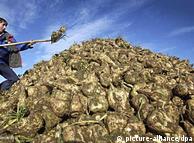Search Results for Tag: Italy
Mafia launders dirty money in clean energy

Wind farms are attracting much attention from the Italian mafia (Photo credit: CC BY 2.0: Peter Rood)
We recently reported on corruption in the climate change industry. Now, a new report by the European Union’s police authority, Europol, says the Italian mafia is increasingly zooming in on clean energy projects such as wind farms in Italy as a way of laundering their illegal money.
The report say that green schemes in Italy “offer attractive opportunities to benefit from generous EU grant and tax subsidies.”
Though Italy is struggling with recession and unemployment, the renewables industry in the country is booming. Reports suggest the Italian government, helped by EU funds to promote clean energy, has provided more than $75 billion to producers of wind and solar energy over the past six years, leading to surging revenues.
That boom, the Europol report says, as well as the legal business structures that the renewable projects offer make the industry attractive to the mafia.
“The Italian mafia is investing more and more in renewable energy, especially in wind farms, to profit from generous European grants paid for by member states which allow them to mix dirty money with legitimate economic activities,” the report said.
In April this year, Italy made its biggest confiscation of mafia assets in history, including dozens of alternative energy companies worth a total of over $1.6 billion, according to news agency Reuters.
The owner Vito Nicastri, a 57-year-old businessman , once dubbed the “Lord of the Wind” because of his vast wind farm holdings, invested money made from extortion, drug sales, and other illicit activities for a heavyweight in Sicily’s Cosa Nostra crime group.
Waste to Wealth

A small Italian company called Bi-on has found a way to turn sugar beet molasses into plastic. They way it works is, they mix the molasses with a bacteria that feeds on sugar during fermentation. It creates lactic acid and polymers that can be used to create a biodegradable substance, a plastic called PHA.
The company’s offices are not far from Italy’s biggest sugar producer, so Bi-on has plenty of sugar beet molasses to pick up. There are other biodegradable plastics out there, but they’re often made up of food particles, not actual trash. The entire field is called bio-plastics, and the company’s new product could help the world become less dependent on the oil-based plastics we mostly use now. And one of the best features of Bi-on’s sugar beet plastic is that it can be destroyed in water, getting rid of the mounds of plastic and waste often seen floating in our lakes and oceans.
You can read more about the story on Deutsche Welle. Let us know what you think!




Feedback